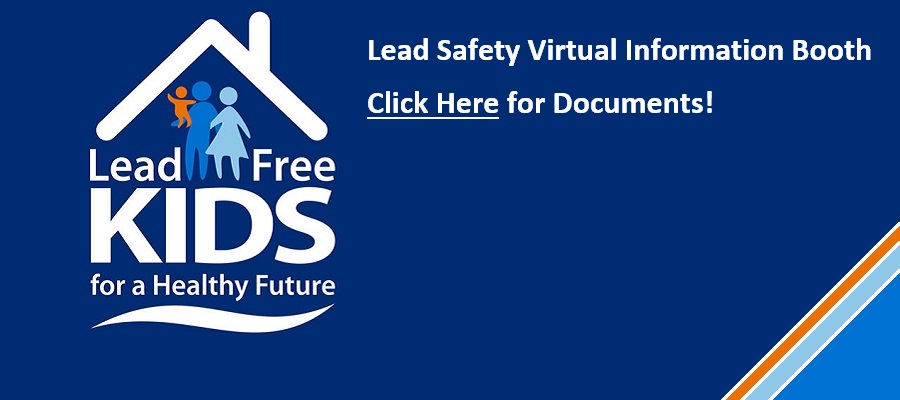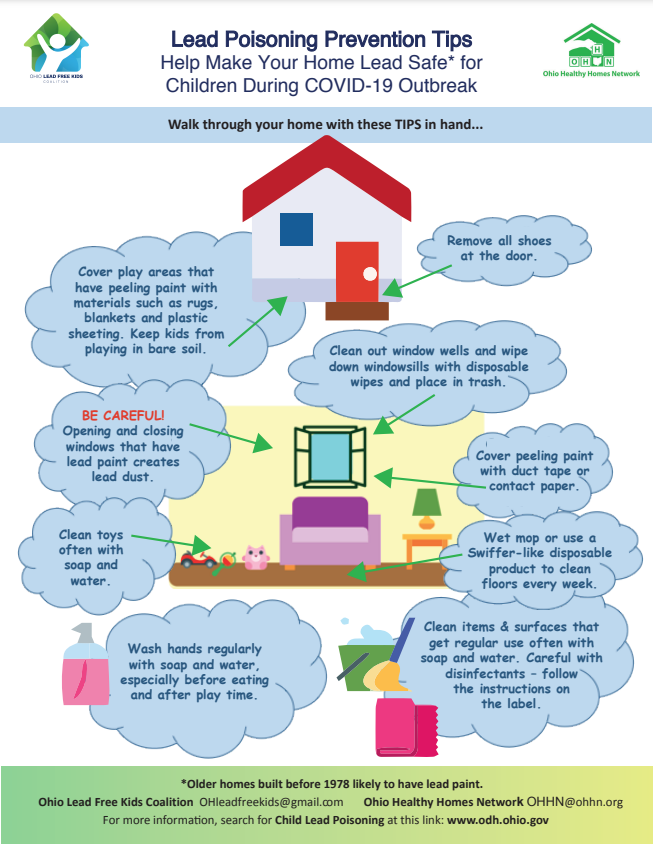


What is Lead?
Lead is a metal that occurs naturally in the earth's crust. While it has beneficial uses, it is toxic to humans and animals and can cause health problems.Where is Lead Found?
Lead can be found everywhere in our environment & the air, the soil, the water, and even inside our homes. Exposure comes mostly from human activity including the past use of lead-based paint in homes and leaded gasoline in automobiles and current uses in other goods. Because of past and current uses of lead, it can be found in a wide variety of products found in and around our homes, including paint, ceramics, pipes and plumbing materials, solders, gasoline, batteries, ammunition, and cosmetics.Lead can also be emitted into the environment from production at some types of industrial facilities and contaminated sites, such as former lead smelters. Mining, smelting, and refining activities have resulted in substantial increases in lead levels in the environment, especially near mining and smelting sites.

Who is at Risk?
Children:
Lead is particularly dangerous to children because their growing bodies absorb more lead than adults do and their brains and nervous systems are more sensitive to the damaging effects of lead. Babies and young children can have higher exposure to lead because they often put their hands and other objects into their mouths that can have lead from dust or soil on them. There are several other ways that children can be exposed to lead:- By eating and drinking food or water containing lead;
- From dishes or glasses that contain lead;
- Inhaling lead dust from lead-based paint or lead-contaminated soil; or
- From playing with toys painted with lead paint.
Adults, Including Pregnant Women:
Adults may be exposed to lead by eating and drinking food or water containing lead or from dishes or glasses that contain lead. They may also breathe lead dust by spending time in areas where lead-based paint is deteriorating, and during renovation or repair work that disturbs painted surfaces in older homes and buildings. Working in a job or engaging in hobbies where lead is used, such as making stained glass, can increase exposure as can certain folk remedies containing lead. A pregnant woman's exposure to lead from these sources is of particular concern because it can result in exposure to her developing baby.| Top of Page |
Lead Exposure Data:
The U.S. Centers for Disease Control and Prevention's (CDC) National Center for Health Statistics monitors blood lead levels in the United States. To get information on the number of children with elevated blood lead levels, and number and percentage of children tested for lead in the city of Cleveland, please contact our Office of Office of Epidemiology and Population Health at (216) 664-EPIS (3747)- The most important step parents, doctors, and others can take is to prevent lead exposure before it occurs. .
- Currently, a child's blood level is considered concerning at 5 or more micrograms per deciliter of lead in blood. This is a recent update, down from 10 or more micrograms per deciliter of lead in blood. The new, lower value means that more children likely will be identified as having lead exposure allowing parents, doctors, public health officials, and communities to take action earlier to reduce the child's future exposure to lead.
What are the Health Effects of Lead?
Lead can affect almost every organ and system in your body. Children six years old and younger are most susceptible to the effects of lead.
Children:
Even low levels of lead in the blood of children can result in:- Behavior and learning problems
- Lower IQ and Hyperactivity
- Slowed growth
- Hearing Problems
- Anemia
Pregnant Women:
Lead can accumulate in our bodies over time, where it is stored in bones along with calcium. During pregnancy, lead is released from bones as maternal calcium and is used to help form the bones of the fetus. This is particularly true if a woman does not have enough dietary calcium. Lead can also cross the placental barrier exposing the fetus the lead. This can result in serious effects to the mother and her developing fetus, including:- Premature birth
- Reduced growth of the fetus
Other Adults:
Lead is also harmful to other adults. Adults exposed to lead can suffer from:- Cardiovascular effects, increased blood pressure and incidence of hypertension
- Decreased kidney function
- Reproductive problems (in both men and women)
Lower Your Chances of Exposure to Lead:
Simple steps like keeping your home clean and well-maintained will go a long way in preventing lead exposure. You can lower the chances of exposure to lead in your home by taking these steps:- Inspect and maintain all painted surfaces to prevent paint from chipping or peeling
- Clean around painted areas where friction can generate dust, such as doors, windows, and drawers. Wipe these areas with a wet sponge or rag to remove paint chips or dust
- Keep your home clean and dust-free
- Wash children's hands, bottles, pacifiers and toys often
- Teach children to wipe and remove their shoes and wash hands after playing outdoors
- Flush water outlets used for drinking or food preparation
- Clean debris out of outlet screens or faucet aerators on a regular basis
- Use only cold water to prepare food and drinks
- Ensure that your family members eat well-balanced meals. Children with healthy diets absorb less lead.
- Address water damage quickly and completely
| Top of Page |
What do I do if I think my child or I have been exposed to lead?
Talk to your pediatrician, general physician, or local health agency about what you can do. Your doctor can do a simple blood test to check you or your child for lead exposure. You may also want to test your home for sources of lead.Contact us at (216) 263-LEAD (5323) to ask a question, provide feedback, or report a problem.
